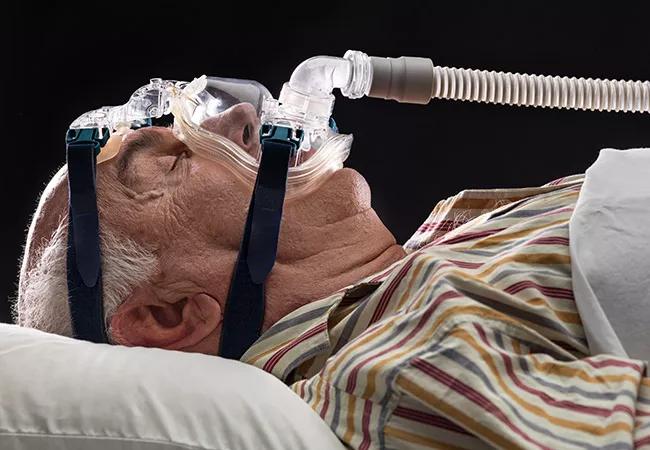Tell PAP device users to assume increased risk of droplet and aerosolized transmission

All forms of positive airway pressure (PAP) therapy should be assumed to increase the risk of droplet and aerosolized transmission of COVID-19.
Advertisement
Cleveland Clinic is a non-profit academic medical center. Advertising on our site helps support our mission. We do not endorse non-Cleveland Clinic products or services. Policy
So advises a practical review of PAP therapy and COVID-19 transmission published by Cleveland Clinic sleep disorders specialist Colleen G. Lance, MD, in a collection of COVID-19 Curbside Consults from Cleveland Clinic Journal of Medicine.
Noting that PAP therapy is an open system that can generate contact, droplet and airborne pathogens, Dr. Lance outlines evidence supporting implementation of contact, droplet and airborne precautions for patients on PAP therapy in the context of the COVID-19 pandemic.
Dr. Lance helpfully summarizes recommendations on PAP therapy and COVID-19 from the American Academy of Sleep Medicine (AASM) relating to two broad patient scenarios:
The review also distills recommendations from an AASM guidance on sleep clinic and sleep laboratory activities during substantial community spread of COVID-19. Central advice here is that in-laboratory sleep studies should be postponed for all patients and home sleep apnea testing should be postponed unless disposable testing devices are used exclusively.
Advertisement
Dr. Lance shares that current practice of Cleveland Clinic’s Sleep Disorders Center is to evaluate potentially urgent requests for in-lab sleep studies on a case-by-case basis. Additionally, Cleveland Clinic uses disposable devices for home sleep apnea testing and disinfects all nondisposable components.
The review concludes with an overview of evidence on emergency use of PAP equipment as a substitute for ventilation, noting that basic continuous PAP and bilevel PAP devices are not designed to function as ventilators and that additional PAP devices, including those with noninvasive ventilation capacity, are not substitutes for ventilators in the context of acute respiratory failure.
Dr. Lance’s referenced review article from Cleveland Clinic Journal of Medicine’s COVID-19 Curbside Consults is available here.
Advertisement
Advertisement

Patients report improved sense of smell and taste

Clinicians who are accustomed to uncertainty can do well by patients

Unique skin changes can occur after infection or vaccine

Cleveland Clinic analysis suggests that obtaining care for the virus might reveal a previously undiagnosed condition

As the pandemic evolves, rheumatologists must continue to be mindful of most vulnerable patients

Early results suggest positive outcomes from COVID-19 PrEP treatment

Could the virus have caused the condition or triggered previously undiagnosed disease?

Five categories of cutaneous abnormalities are associated with COVID-19